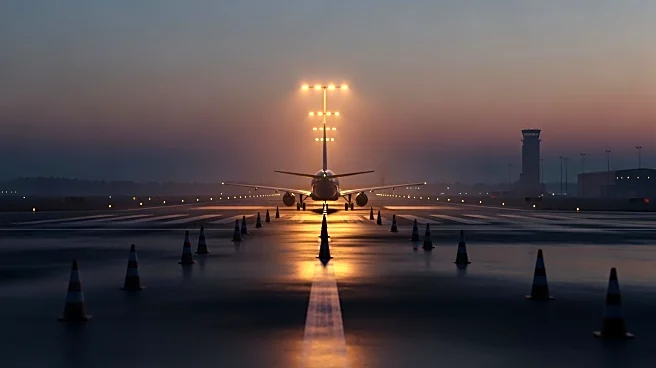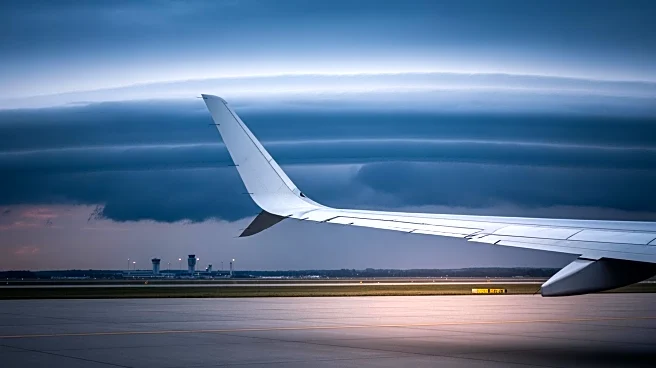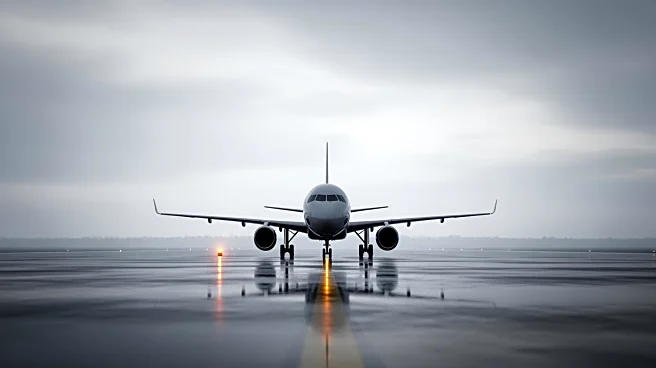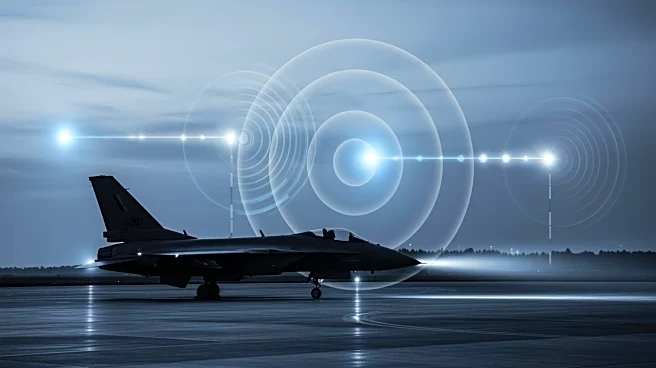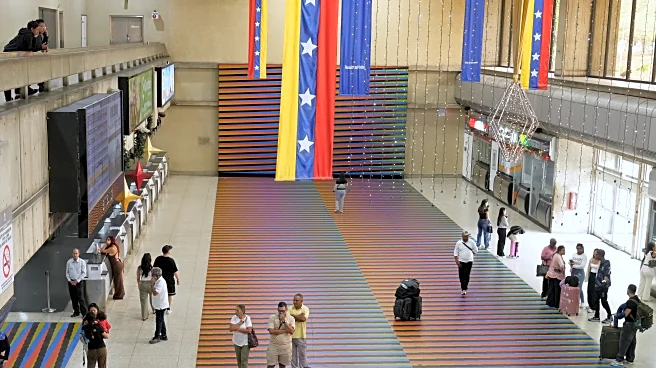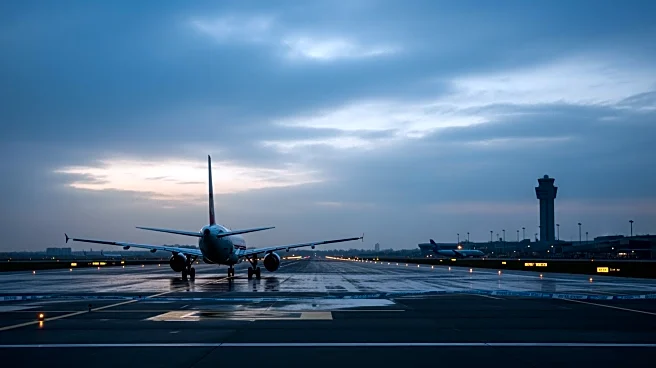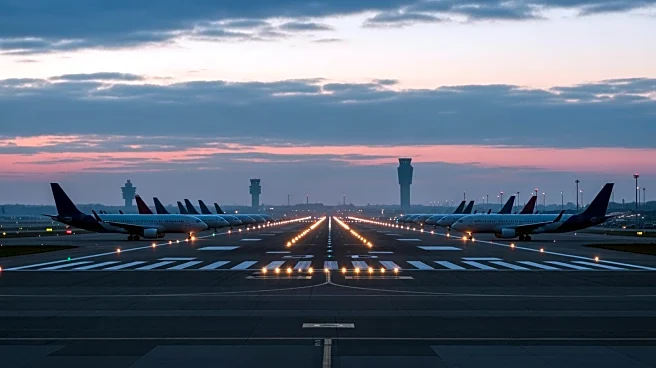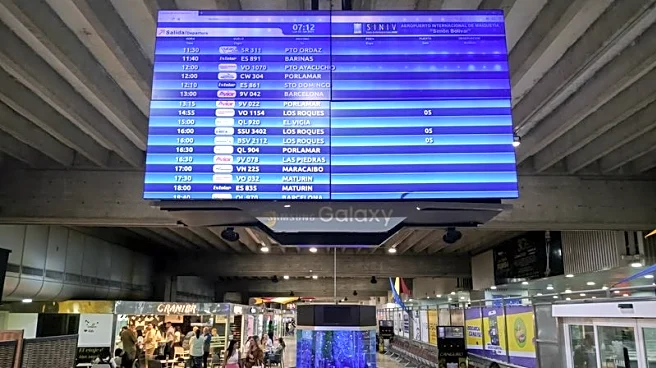What's Happening?
The National Institute of Civil Aeronautics (INAC) in Venezuela issued a 48-hour ultimatum to international airlines to resume operations or face permit revocation. This move comes after the US Federal
Aviation Administration (FAA) and Spanish authorities issued safety warnings for Venezuelan airspace, citing unacceptable risks due to uncoordinated military activity. Major airlines, including Iberia, TAP, LATAM, Avianca, GOL, and Caribbean Airlines, have suspended flights, prioritizing safety over political pressures. The International Air Transport Association (IATA) emphasized that these suspensions are temporary measures responding to safety protocols.
Why It's Important?
The suspension of flights to Venezuela highlights the intersection of aviation safety and political tensions. Airlines operate based on risk assessments, and the current environment in Venezuela poses significant threats to operational safety. The ultimatum by INAC reflects a political urgency that clashes with technical realities, as airlines cannot risk flying uninsured into hostile airspace. This situation underscores the importance of coordinated airspace management and the influence of global insurance markets on aviation operations.
What's Next?
As long as Venezuelan authorities cannot guarantee safe airspace free from military threats, airlines are unlikely to resume operations. The INAC ultimatum may lead to increased isolation for Venezuela, affecting connectivity and economic activities. Airlines have stated they will return once conditions allow, indicating a potential for prolonged suspension if safety concerns are not addressed. The situation may prompt further diplomatic and regulatory discussions to resolve the crisis.
Beyond the Headlines
The crisis in Venezuelan airspace reflects broader geopolitical tensions in the region, with military activities influencing civilian aviation. The presence of naval forces and increased military readiness in the Caribbean adds complexity to the situation. This development may lead to long-term shifts in regional aviation policies and insurance practices, as airlines and regulators adapt to evolving threats.
